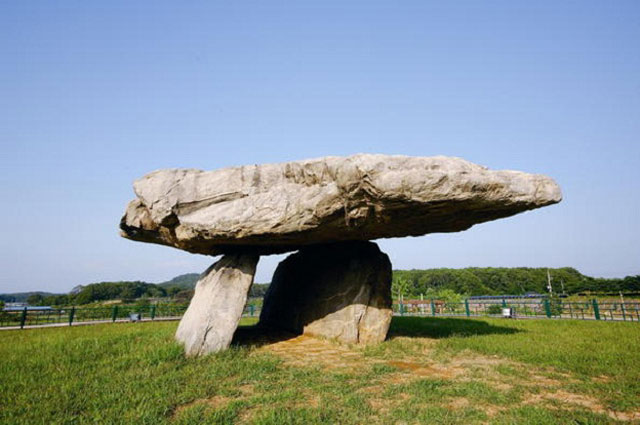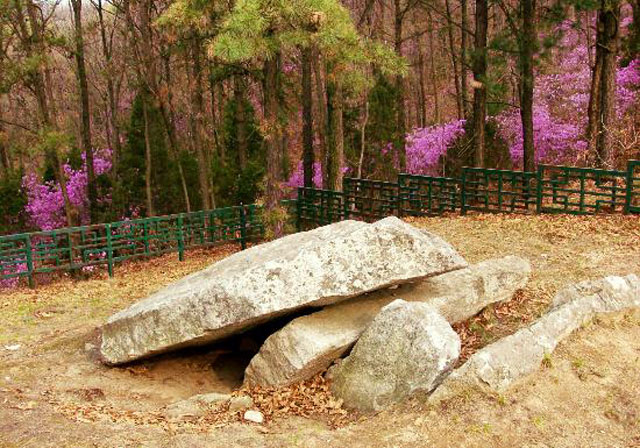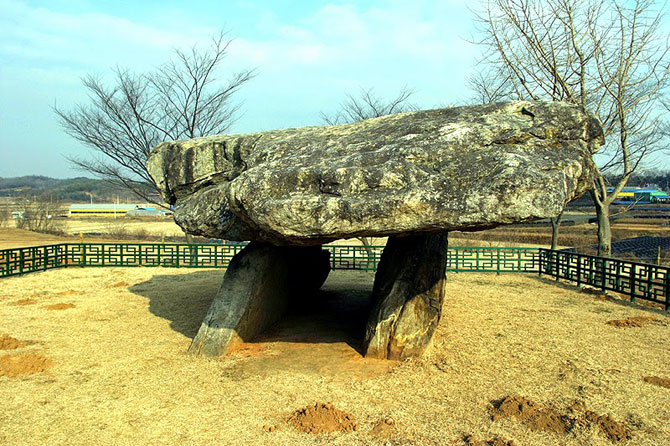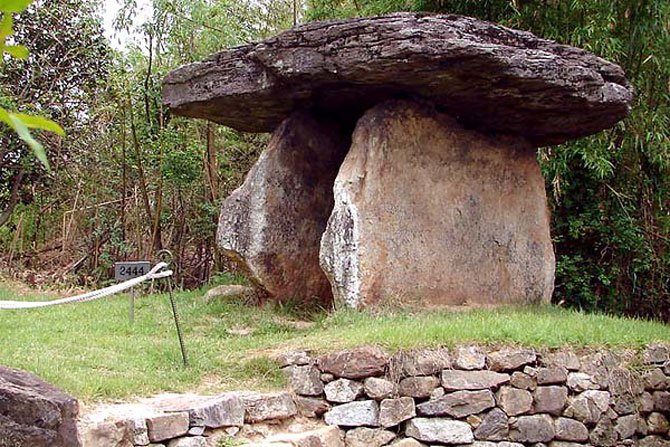Gochang, Hwasun and Ganghwa dolmens
The Unesco Scientific, Educational and Cultural Organization has recognized Korea's Gochang, Hwasun and Ganghwa dolmens as a World Cultural Heritage in 2000.

Gochang, Hwasun and Ganghwa dolmens are located in the western region of Korea. This prehistoric tomb area has hundreds of dolmens and tombs from the 1st century BC that are bound by large rocks. These dolmens are very popular in Asia, Europe and South Africa, but experts say the number of dolmens in Korea is the most in the world.

The stone tomb was designed by the ancients with 2 or more stone plates supporting a large stone plate. This is a very simple form of stone tomb, the stones are erected, below is the corpse of important figures of the Neolithic period and the Bronze Age. Each mound covered the dead body of the dead, but the part covered on it gradually disappeared due to the impact of weather or wild animals digging.

In the past, the protection of this area was not much of a concern, but in recent years the archaeological values of the graves of Gochang, Hwasun and Ganghwa have been paid attention. Rock graves at Gochang, Hwasun, and Ganghwa are the most dense and most densely populated in the world. These grave sites provide important evidence of how the stones were mined, transported and brought up.

The first excavation was carried out by archaeologists in 1965 in Gochang, after the first geological survey was conducted. The program was followed by a survey program in 1983 and 1990. Excavations were later conducted in 1992. Particularly , the Hwasun Dolmens Group until 1996 was discovered by these dolmens. located in the forest reserve.

Gochang dolmens are the largest and most diverse grave site, located in the center of Maesan village . Most of these dolmens are located between 15 and 50 meters above the southern foothills. The crest of these dolmens has a height of 1 to 5.8 meters and can weigh from 10 to 300 tons. According to the record, there are 442 stone tombs with many different styles, depending on the shape of the top. The total area of Gochang area is up to 8, 38 hectares.

Similar to the Gochang dolmens, Hwasun dolmens are located on the slopes of low hills, along the Jiseokgang River . Single dolmens in this area are preserved more intact than Gochang dolmens. The Hyosan-ri dolmens are estimated to have 158 and the Daesin-ri region has 129. In some dolmens that rise above the ground, stone slabs can be seen, which have been exploited from the quarries in the area. The Hwan dolmens area has the largest area of 31 ha, but the number of graves found here is not as much as in Gochang.

Ganghwa dolmens site is located on the slopes on the island of Gangwha, an area of 12, 27 hectares. These dolmens are taller and built in a more distinctive style than stone tombs at Bugun-ri and Gocheon-ri. These three areas have been included in the list of national-level monuments under the auspices of the Korean Cultural Heritage Agency.

Gochang, Hwasun and Ganghwa dolmens are recognized as the World Cultural Heritage by the United Nations Organization for Science, Education and Culture according to criteria (iii): Prehistoric grave construction technology started to export from the 2nd and 3rd centuries BC. Cemetery - the grave site of Gochang, Hwasun and Ganghwa dolmens is a powerful testament to this period of human history.


- Tomb of 25,000 years old in Russia
- The impressive UNESCO heritage in 2016
- The 7,000-year-old Spanish tombstone was first 'exposed' after half a century
- Sustainable agriculture model for alkaline soils
- Super NASA computers simulate a whirlwind from a drone plane
- Symbian encourages cheap 3G services
- This invention can eliminate complications in cosmetic and medical surgery
- Arsenic can be fatal after 20 years
- Students make instant hemostatic substances
- Normal indicators when evaluating a semen test
- Free gifts from NASA
- Beams of lemurs 'ballet, hip hop dance'
 Suzhou classic bonsai garden - China
Suzhou classic bonsai garden - China Chau Nguyen Dynasty
Chau Nguyen Dynasty Thai Son Mountain - World Wonder
Thai Son Mountain - World Wonder Ancient villages of Shirakawa-go and Gokayama
Ancient villages of Shirakawa-go and Gokayama